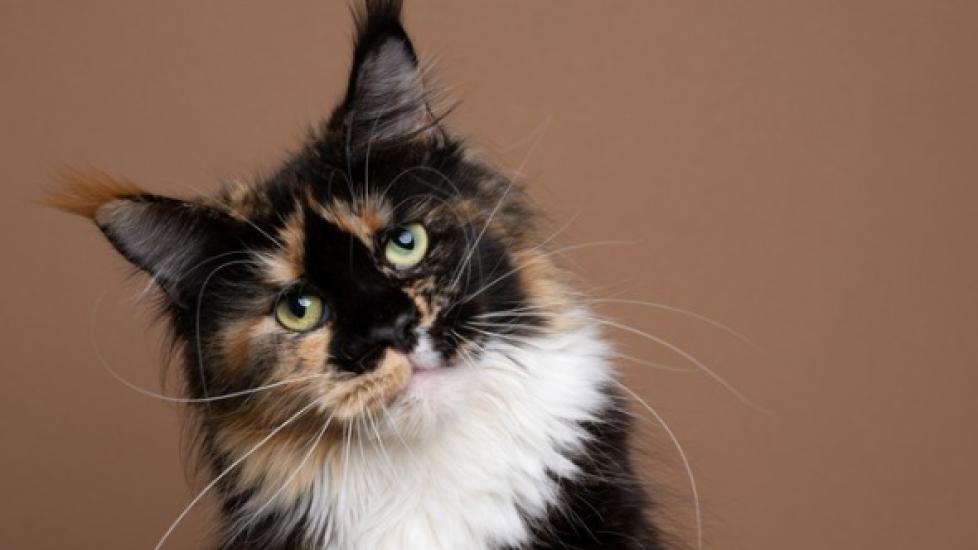Head Tilt in Cats
You look over at your cat to see them gazing back at you with an adorable head-tilted-to-the-side pose. Sure, it’s really cute, but a head tilt in cats can also be a symptom of something serious.
How do you know when your cat is just paying close attention to a sound or motion, or when it’s a sign of a problem? Fortunately, there are some clues you can use to help figure out if the head tilt is normal or something you need to worry about.
Is Head Tilting Normal in Cats?
Cats will tilt their heads to one side when they are closely studying something or listening for movement. Cats can accurately judge distance when they bring one ear closer to a sound. Tilting their head can help, because their brains triangulate distance based on when a sound signal hits each ear independently.
One good way to tell if your cat is just listening or having a problem is by calling their name or trying to get their attention. If your cat is just tilting their head to listen to something, they will straighten up immediately when they hear your voice.
By contrast, cats that are tilting their heads because of a medical problem may also be off-balance and may stumble or fall when they try to move. Their eyes may look unusual (continuing to move even when their head is still), and their head will generally stay tilted the whole time.
If you see this type of behavior, it’s time to take your cat to the veterinarian to find out why.
Vet Recommended Health Support
- Feliway Optimum Enhanced Calming 30 Day Diffuser for Cats$29.99Chewy Price
- Purina Pro Plan Veterinary Diets FortiFlora Powder Probiotic Digestive Supplement for Cats, 30 count$30.99Chewy Price
- Purina Pro Plan Veterinary Diets Hydra Care Liver Flavored Liquid Supplement for Cats, 3-oz pouch, case of 12$14.99Chewy Price
- Purina Pro Plan Adult Sensitive Skin & Stomach Lamb & Rice Formula Dry Cat Food, 7-lb bag$28.08Chewy Price
What Causes Head Tilting in Cats?
If you’ve ruled out the possibility that your cat tilted their head to hear something better, it’s time to look at possible medical causes.
Inner Ear Infection
Perhaps the most common medical reason behind head tilting is an infection in the inner ear that inflames the nerves that help cats stay balanced. Cats with an inner ear infection may have trouble eating or pain while eating. Occasionally, their face may seem to droop on one side. Many cats will have their “third eyelid” raised on one eye.
Most cats recover from this type of ear infection with treatment, which may include antibiotics over several months and sometimes even surgery.
Idiopathic Vestibular Disease
Head tilt may also be caused by a condition known as idiopathic vestibular disease. “Idiopathic” means there is no known cause, and vestibular disease is a condition that affects the system that controls balance.
Cats with this condition may lose their balance, and their eyes may move even when their head is still. Idiopathic vestibular disease may start suddenly, and even a thorough veterinary exam and extensive testing may not show an underlying cause.
This condition generally resolves without treatment within a few days. However, because the symptoms are identical to more severe conditions, any cat showing these signs should be examined immediately.
Medications
Adverse drug reactions and drug toxicities can also cause head tilts in some cats, especially topical ear medications. If your cat started on a new medication shortly before the signs appeared, it’s worth a call to your veterinarian to find out if this might be a side effect.
Growths
Growths and polyps in the ear are a very common reason for cats to develop a head tilt. These masses, benign or not, take up space in an area where there is little room, and any growth puts pressure on the nerves.
The result is inflammation and disturbance in the balance system. Growths can result from inflammation, infection, and chronic irritation, or they can be more concerning and be pre-cancerous or cancerous. For many cats, once these growths are removed, their condition improves.
How Vets Diagnose the Cause of Head Tilt in Cats
It can be challenging to diagnose what’s causing a head tilt. Your vet will want to see deep in the ear canal, which is surrounded by bone, making it impossible to see the problem without special testing.
A diagnosis is likely to start with a thorough physical exam where the vet will look down the ear canal at the eardrum. If this appears abnormal or ruptured, they may order additional testing.
Many veterinarians will follow up with lab work, including screening for viral infections as well as a basic body screen. Although this does not result in a diagnosis in most cases, it can be very helpful in ruling out certain conditions.
The next steps will likely depend on what your veterinarian found in the early examinations. For many cats, the next step will involve an exam with sedation—it is much easier to look down the ear canal and in the back of the throat when a cat is sedated. In most cases, X-rays are also taken while the cat is sedated. If infection is suspected, your veterinarian might also take a sample from your cat’s middle/inner ear.
In some particularly difficult cases, advanced imaging such as a CT or MRI will be recommended. These tests allow vets to better see the areas hidden behind bone. If the veterinarian is concerned that the problem might involve the brain and not just the ear canal, analysis of fluid from the central nervous system, called a CSF tap, might be recommended.
Treating the Cause of Head Tilting in Cats
Treatment for a head tilt in a cat will depend on the underlying diagnosis.
-
Long-term antibiotics are often recommended for inner ear infections.
-
Masses of any sort, such as cysts, polyps, or tumors, generally need to be removed to resolve the signs.
-
For a problem that involves inflammation only, such as with some viral infections or immune conditions, anti-inflammatories might be recommended.
-
Idiopathic vestibular disease will likely resolve on its own without any treatment.
Any cat that has a head tilt and is disoriented or off-balance might benefit from anti-nausea medication as well as other treatments to help resolve symptoms.
Even though there are some conditions that can resolve without treatment, it is highly recommended that you see your vet as quickly as possible when it comes to head tilting in cats. Issues like growths and infections are only likely to get worse with time, and delaying the diagnosis could cause long-term damage.
Featured image: iStock.com/Nils Jacobi




